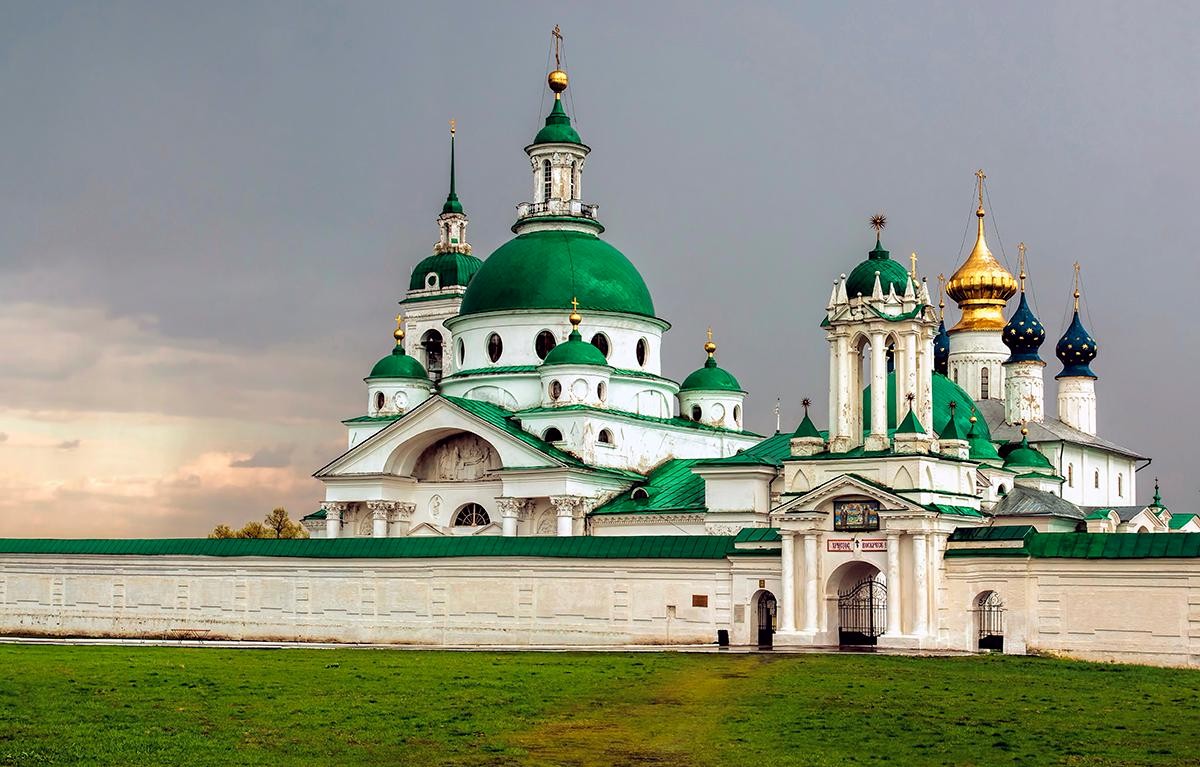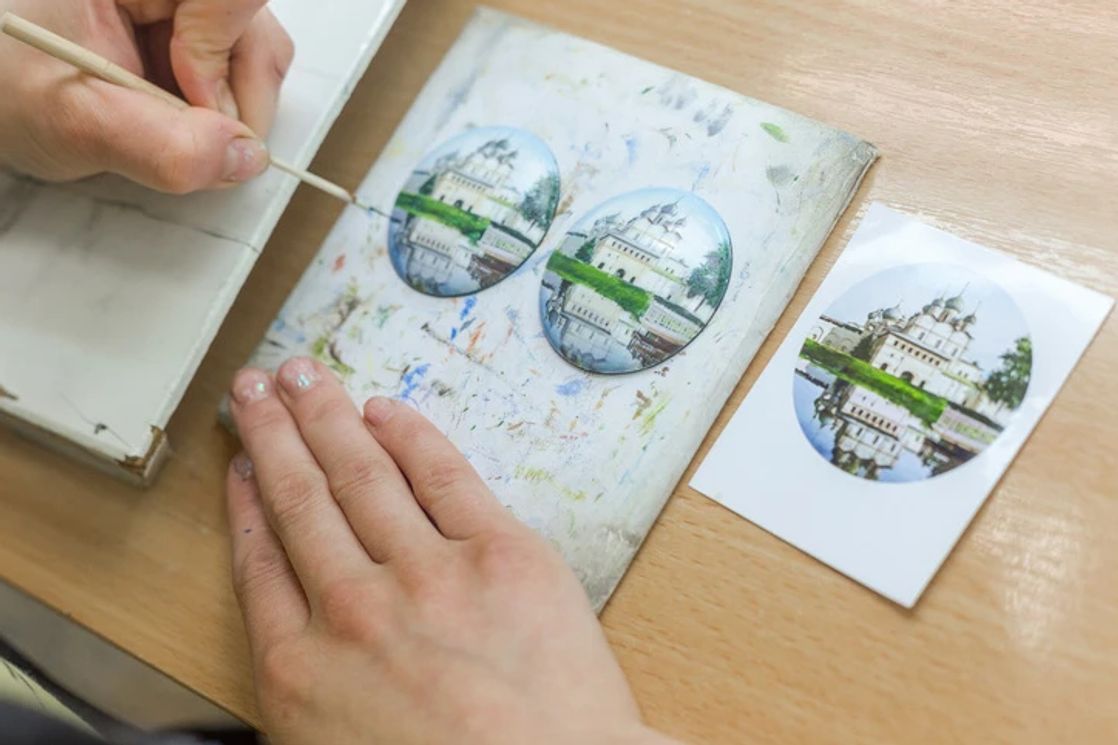Rostov the Great: A Historic Marvel

Founded before 862, Rostov the Great is one of the oldest towns in Russia. It is sometimes called 'The Jewel of the Golden Ring of Russia' for its numerous well-preserved churches and cathedrals, unique Kremlin, and long-lasting artisanal traditions. Located just two hours from Moscow, Rostov is an ideal spot for a weekend trip.
Getting There
From Moscow, you can get to Rostov the Great by train or car. While train tickets are reasonably priced (a Lastochka train journey costs around 2,400 RUB for a round trip), it's advisable to book them in advance via the Russian Railways (RZD) website, especially during peak tourist seasons.
Notable Sights
The Rostov Kremlin
Rostov the Great’s Kremlin is unlike those found in other Russian cities. Built in the latter part of the 17th century by local Metropolitan Jonah III Sysoevich, it deviated from the typical fortress design, serving as his personal bishop's residence. This departure from convention is evident in the architectural elements: towers with big windows and platbands, broad gates, and walls without loopholes.
The oldest structure within the Kremlin grounds is the five-domed Assumption Cathedral, dating back to the early 16th century. The original wooden church at the site was built in 991 following the baptism of the local populace. The current cathedral houses the relics of revered saints, including the town's patron, Leontius of Rostov, and St Theodore, the nephew of Sergius of Radonezh. Inside, remnants of the original 17th-century wall paintings can be seen alongside bronze door handles with lion visages dating back to the 12th century.
Another noteworthy attraction is the 1680s bell tower, featuring 15 original bells cast in the 17th century. Among them, the 'Sysoy' bell is the largest and weighs nearly 33 tons. These bells perform melodies composed between the 17th and 19th centuries, known as the Rostov Bell Melodies.
A single ticket to visit all exhibitions at the Rostov Kremlin Museum costs 1000 RUB. Open daily 9 am–5:30 pm.
The Monastery of St Jacob Saviour
The monastery of St Jacob Saviour traces its origins to the late 14th century. It was the first in Rostov to be reopened in the 1990s after the Soviet anti-religious campaign.

The monastery served as the residence of St Dimitri of Rostov, a prominent clergyman during the 17th and 18th centuries, which made it one of the most significant convents in the town. Following Dimitri' canonisation, his relics were placed in the Cathedral of Conception within the monastery. According to legend, they are said to possess healing properties.
Dimitri of Rostov is known for his literary contributions, particularly the 'Book of the Lives of the Saints' ('Chetyi-Minei'), written during his tenure as the Metropolitan of Rostov. This compilation, which contains descriptions of over 600 lives, was revered by Russian literary giants such as Pushkin, Dostoevsky, Tolstoy, and others.
Another attraction within the monastery is its churches. While the surviving architectural ensemble dates for the most part from the 18th and 19th centuries, earlier elements can also be seen. For instance, the Conception Cathedral features frescoes dating back to the 1680s.
Visiting the monastery is free of charge. Open daily 7 am–7:30 pm.
Lake Nero
This lake appeared more than 500,000 years ago and has become a local attraction. In 991, the town's inhabitants underwent their inaugural baptism on Nero's shores. Commemorating this event, a Cross of Worship was erected on the embankment near the Kremlin in 2015.
Yet the lake is known predominantly for the legends that surround it. One prevalent belief suggests that the ancient town of Kitezh sits on its bottom and is concealed by the lake’s waters. Another tale tells of the presence of monastery treasures—allegedly cast by Rostov's residents during the Tatar-Mongol invasion to prevent anything falling into Batu Khan's hands. This account remains impossible to verify due to the lake's bottom being obscured by a dense, impenetrable sapropel. These thick deposits, composed of algae and various organisms, have accumulated over centuries, and in some areas reach depths of up to 20 meters.
Prominent Places to Explore
Rostov Finift Factory
Finift, a craft originating in Byzantium, involves a technique known as 'fire writing.' In essence, it entails the application of refractory paints on enamel, followed by frequent firing. This process results in beautiful artefacts that resist fading with time. Rostov witnessed a rapid development of finift craftsmanship during the 18th century, achieving wide esteem. Notably, local artisans were summoned to Jerusalem in 2005 to replicate icons within the Church of the Holy Sepulchre.

The Rostov finift factory, established after World War II, houses a museum showcasing numerous local items: jewellery, portraits, and notably icons, some dating back to the 18th century. The museum's exhibits include tools utilised by finift craftsmen, such as the courant—a quartzite stone employed in enamel grinding. Visitors to the museum also have the opportunity to partake in a masterclass to craft their own souvenirs.
An entrance ticket costs 150 RUB for students. Open Mon–Sat 10 am–6 pm, Sun 10 am–5 pm.
Museum of Rostov Merchants
Located within a 19th-century historical house—the Kekin merchants' residence—the museum stands as a tribute to Alexey Kekin, a prominent benefactor and native of Rostov. This affluent industrialist played an active role in his hometown's development, contributing to the restoration of the Kremlin's architectural ensemble, initiating a water supply system, and establishing a linen manufactory. His legacy included a substantial donation of eight million rubles to Rostov upon his passing, resulting in the establishment of the town's first gymnasium, which continues to operate.
The manor now hosts an exhibition showcasing the lifestyle and culture of merchants. Extensive restoration efforts have recreated the original decor of each room. Noteworthy displays include rare furniture and Japanese porcelain in the dining area, pearl-embroidered hats and a hand sewing machine in the ladies' living quarters, and a hallway decorated with engravings and 19th-century Rostov plans alongside portraits of merchants, offering a look into the town's appearance from two centuries past.
A visit to the museum is included in an extended single ticket (1200 RUB) to the Rostov Kremlin, which includes a visit to all expositions of the Rostov Kremlin and a visit to the Museum of Merchants. Open Wed–Sun 10 am–5 pm.
Frog Princess Museum
There's a theory linking the folk tale 'The Frog Princess' to the lands of Rostov. This speculation potentially led to the establishment of the town's first fairy-tale museum. Featuring interactive elements, the museum offers visitors masterclasses, quizzes, encounters with characters like Koschei the Immortal, and even a quest to rescue Vasilisa the Wise. Notably, the museum features a vast collection of over six and a half thousand frog figurines, crafted from diverse materials such as wood, metal, glass, fabric, finift, and even chocolate.
The entrance ticket price is 250 RUB for adults. Open daily 10 am–6 pm.
Dining Delights
Alyosha Popovich: A rustic wooden log house-themed restaurant serving authentic Russian cuisine, offering a taste of the region's culinary delights. The average bill is about 600 RUB.
Schuchy Dvor: This venue not only serves traditional Rostov fish soup (from 310 RUB per portion) but also doubles as a museum and theatre, offering a cultural experience alongside delicious food. The average bill is about 1000 RUB.
Memorable Souvenirs
Take home a piece of Rostov's heritage with finift enamels or black-smoothed handmade ceramics, both local artisanal specialties.
Useful Tips
- Seasonal Considerations: Plan your visit with consideration of Rostov's distinct seasons. While summer offers vibrant greenery and pleasant weather for outdoor activities, winter transforms the landscape into a picturesque snowy wonderland, ideal for unique experiences like ice fishing.
- Exploring Historical Sites: Purchase a combined ticket (from 1000 RUB) granting access to multiple historic sites (such as multiple exhibitions at the Rostov Kremlin, Museum of Rostov Merchants, Museum of Porcelain).
- Workshop Reservations: If you are interested in craft workshops or museum experiences like the Rostov Finift Factory or Frog Princess Museum, consider booking in advance.
Text by Maxim Lukianenko and Alexander Tkachenko, bachelor’s students of Foreign Languages and Intercultural Communication, interns at the HSE University English website team

